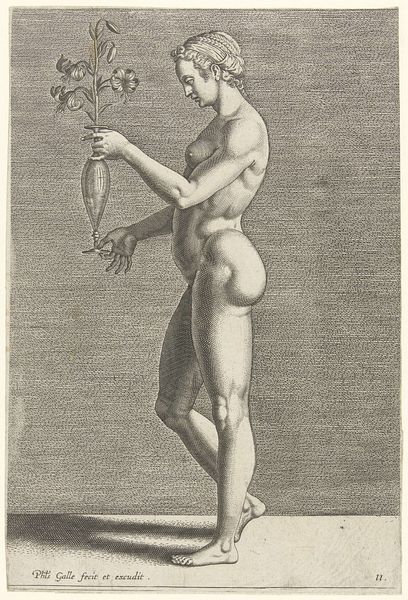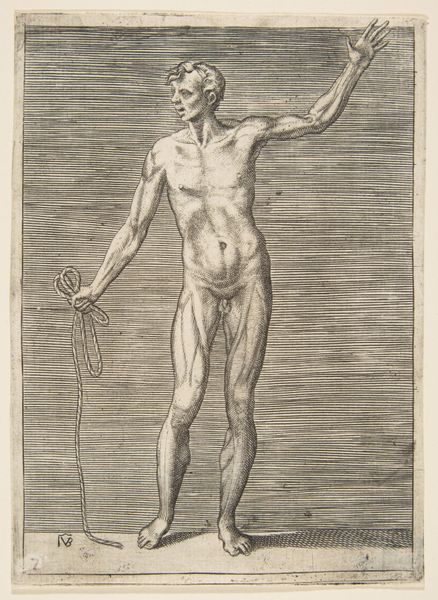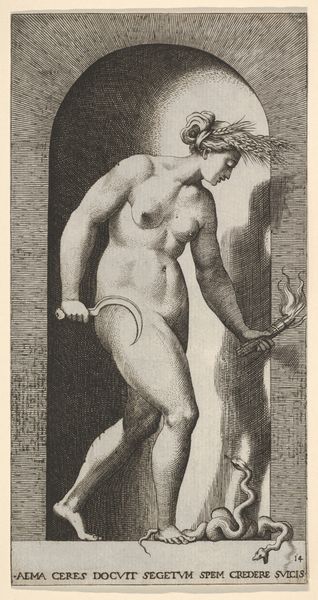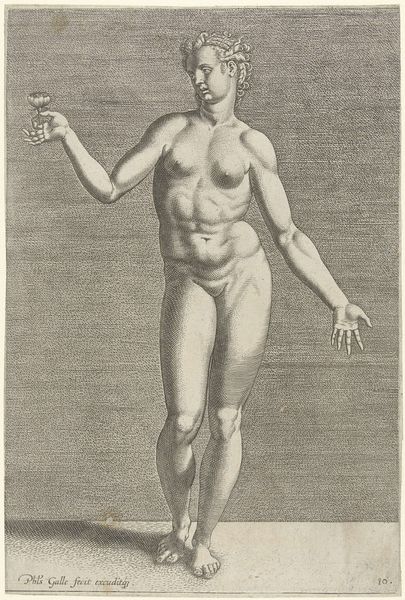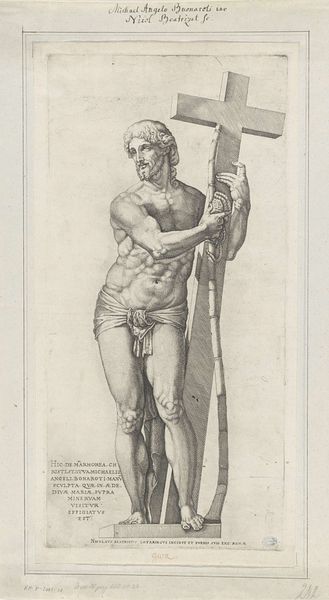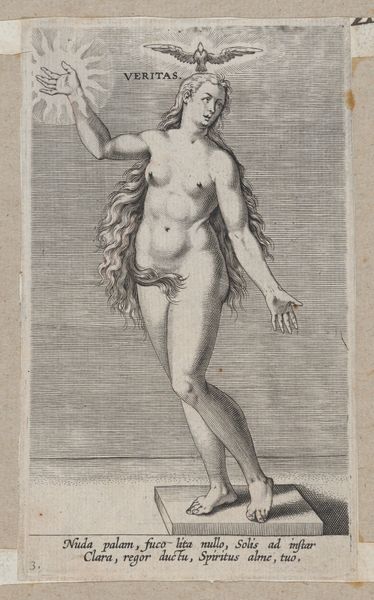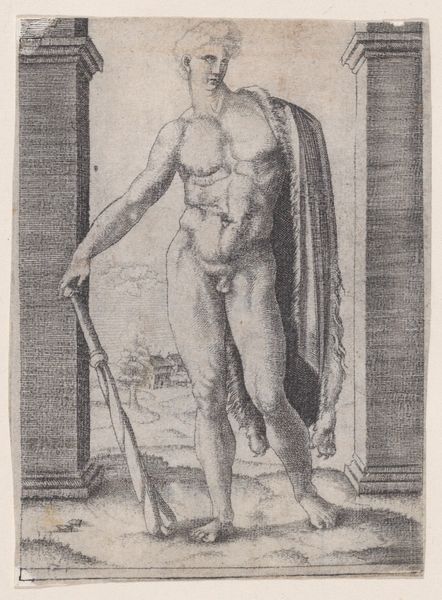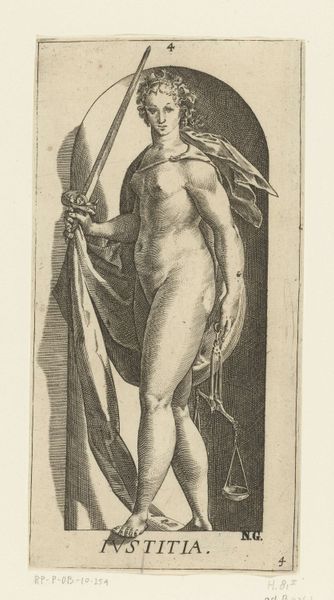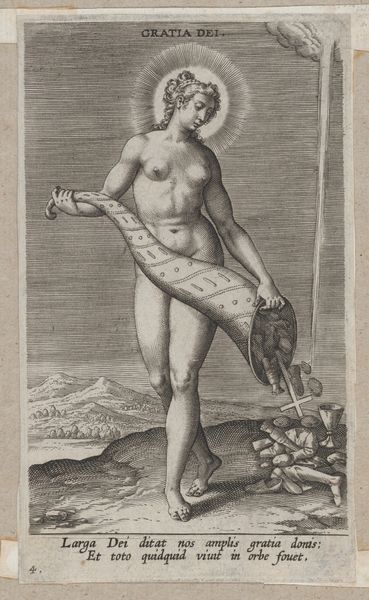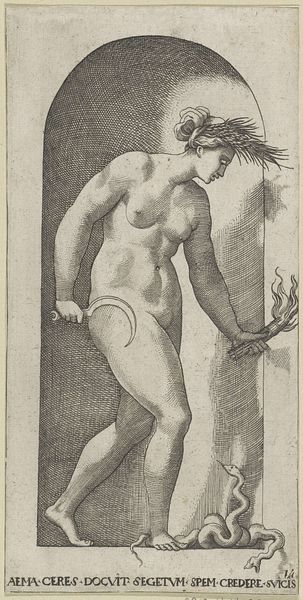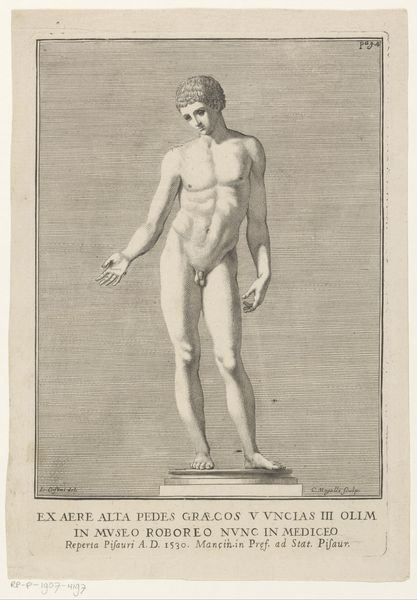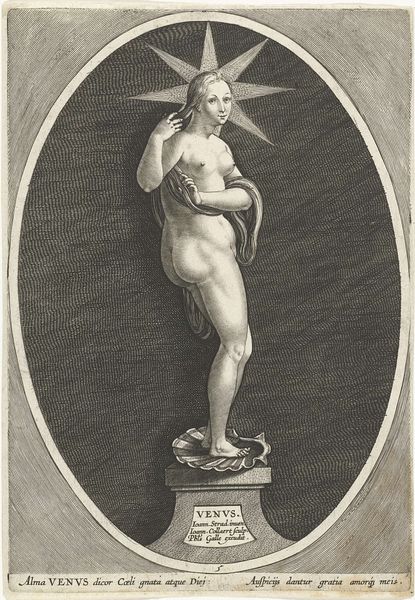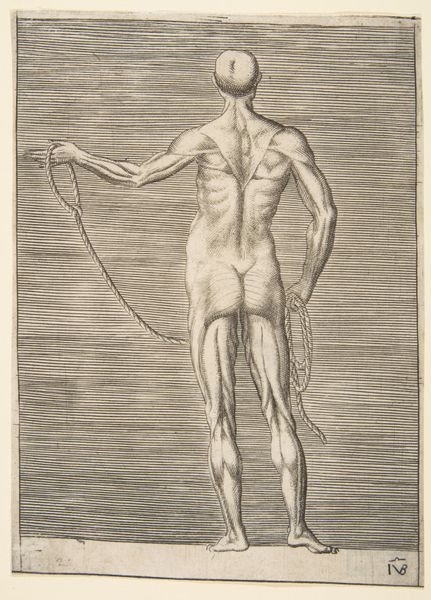
Plate 7: Diana; statue of the nude goddess standing on a socle, wearing a crescent moon in her hair and holding a bow and arrow; from 'Statues of Roman Gods' after Jacques Jonghelinck 1586
0:00
0:00
Dimensions: Sheet (Trimmed): 9 15/16 × 6 9/16 in. (25.3 × 16.6 cm)
Copyright: Public Domain
Curator: Let's dive into this engraving by Philips Galle from 1586, "Plate 7: Diana; statue of the nude goddess..." It depicts the Roman goddess Diana, nude, holding a bow and arrow, based on a sculpture by Jacques Jonghelinck. The image is striking, no? Editor: It is! The engraving’s precision is pretty amazing; the texture almost makes you feel the cool stone. It's like she’s both powerful and vulnerable at the same time. How should we read this piece through a different lens? Curator: Consider the printmaking process itself. Engravings like this weren't just about aesthetics. They were about mass production, about disseminating imagery. Look at the lines, the labor involved in creating this. Who was the audience and what was their role in consuming these images? Editor: So, instead of focusing on the artistic skill alone, we’re considering it as a product made to be sold and consumed? Curator: Exactly. Engravings like this democratized art, bringing classical themes into the homes of a wider audience, although admittedly a wealthier one, given that printmaking involved expenses and required investment. We need to examine the workshops, the printers, the market for these images. Did Galle produce many similar works of this style? Were such prints lucrative in his workshop? Editor: I guess I never thought about it that way. I always focused on the art historical stuff, not the…manufacturing. Curator: Well, art *is* manufacturing, to some extent. Understanding the material conditions informs our understanding of its value and function within a society. Even mythological content like this reflects the socio-economic dynamics of the time. Editor: Thinking about the labor, the materials, the *process* changes how I see the piece completely. I’m off to read up on the Galle workshop right now! Curator: Exactly! Recognizing this makes the entire work even more powerful. It connects us to a very material history.
Comments
No comments
Be the first to comment and join the conversation on the ultimate creative platform.
